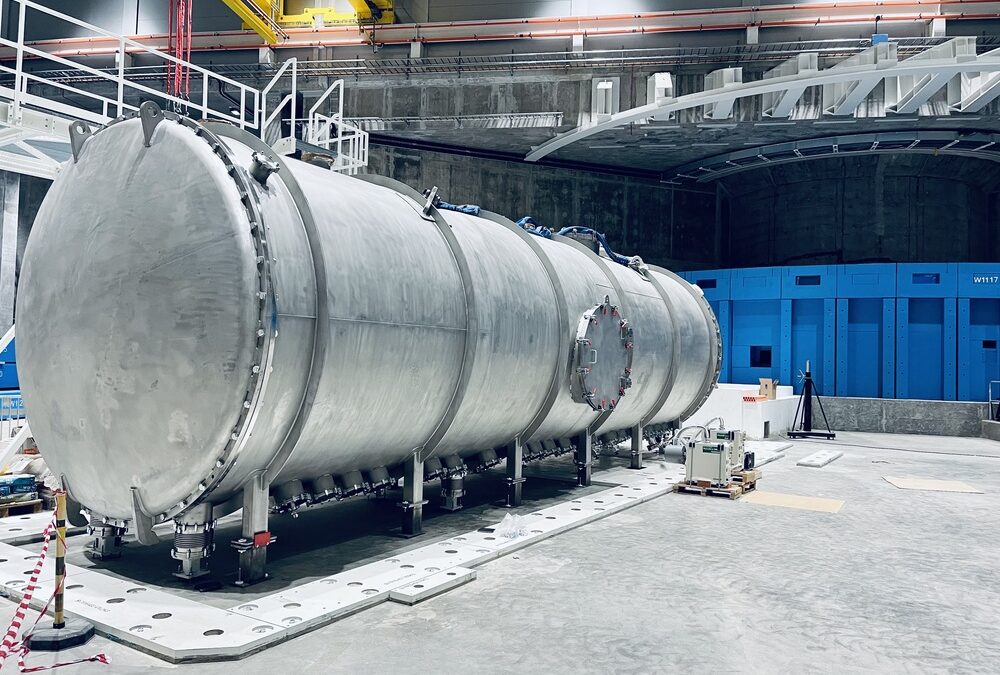When an ASME Code Stamped Pressure Vessel is built, it is fabricated to the specifications of the ASME Boiler and Pressure Vessel Code. Repairs, however, are covered by the National Board Inspection Code, commonly referred to as the NBIC.
Common Pressure Vessel Repairs
Some of the most common types of repairs to pressure vessels that are covered by the NBIC include:
- Failed and corroded weld repairs
- Nozzle replacement and installation
- Heat exchanger tube repair or replacement
- Mounting clips for ladders and other externally mounted components
1. Weld Repairs
Anywhere there’s a joint, there’s a potential weakness in your pressure vessel. Especially in pressure differentials, welds can fail under stress. There are many causes of weld failure, some occurring in production, such as porosity in the weld or the inclusion of slag. Others — namely corrosion — occur over long stretches of time, as the weld is exposed to the elements and gradually corrodes, eventually causing cracks and other issues.
2. Nozzle Replacement and Installation
Nozzles on pressure vessels see a lot of use, and as such, they comprise a common type of pressure vessel repair. Nozzles can wear out over time, and their components can become degraded, sparking a need for replacement. Additionally, installing new nozzles when the need arises is common and also falls under the NBIC. Technology can change over the lifespan of a pressure vessel (which can be over 20 years), and replacing older nozzle designs with new, more efficient ones can be a repair well worth making.
3. Heat Exchanger Tube Repair or Replacement
Graphite heat exchangers on pressure vessels can require a variety of tube repair services, as tubes and tube sheets can take a variety of damage: corrosion of the tube or sheet end, cracking, joint failure, excessive loads, and vibration damage or weakening of the tube materials. When these kinds of issues occur, tubes and tube sheets can be totally replaced or repaired by means such as plugging the damaged tubes or with welding or adhesives.
4. Mounting Clips for Ladders
Working on and around pressure vessels carries some inherent risk. For cases when ladders must be installed on pressure vessels for access to gauges or making repairs, mounting clips are to be installed according to the code, in order to prevent damage to the vessel itself and ensure adequate, ergonomic access to necessary components of the equipment for technicians.
Any repairs or additions that require welding non-pressurized components to pressurized components or boundary components of the vessel fall under the NBIC, and require special care to guarantee the soundness of the weld and avoid compromising the vessel’s ability to maintain the pressurized environment.
Inspecting for Necessary Repairs
Because pressure vessels are pressurized and contain sensitive materials, keeping up with maintenance and repairs is critical. To know when repairs are needed, reduce downtime, and keep your pressure vessel operational, you should have a regular inspection program.
Pressure vessels should be inspected at least every five years to check for these commonly needed repairs, if not more frequently, depending on the code to which your vessel needs to adhere.
Who Performs Pressure Vessel Repair Services?
The NBIC clearly defines who is and who is not authorized to conduct repairs that fall under the code, like fortifying corroded welds. To perform repairs governed by the code, repair shops must be certified by the National Board to use the proprietary R-stamp. This certification ensures the qualification of the servicer to meet the necessary design, materials, and quality standards of the code.
When you need NBIC-compliant pressure vessel repairs, call PALA. We are certified to use the NBIC R-stamp, and can perform all repairs governed by Part 3, Section 3 of the National Board Inspection Code. We fabricate and service a variety of pressure vessels, including ASME Div. 1 and 2 code vessels, API 650 and API 620 tanks, and Section VIII pressure parts. We not only hold the NBIC R-stamp accreditation, but also accreditation for U-, U2-, and S-stamps.

